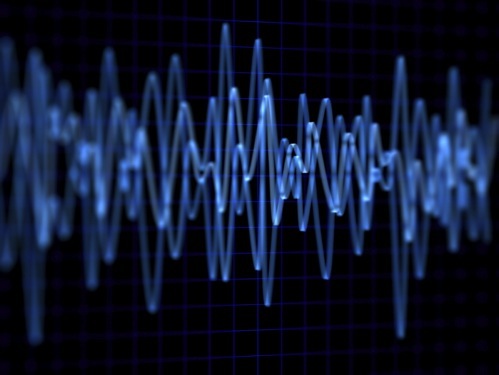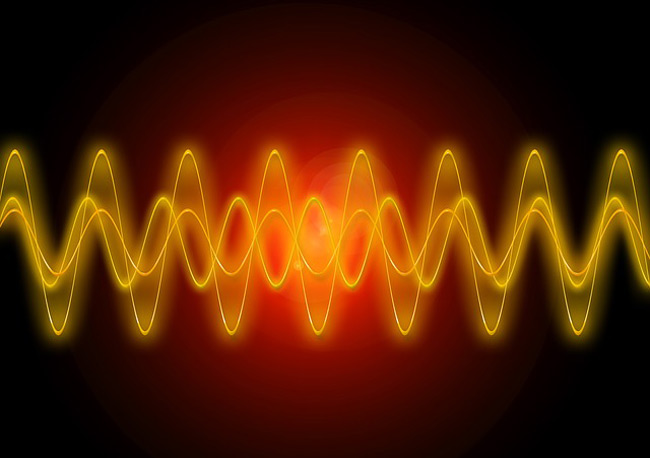Binaural beats work by playing two slightly different frequencies in each ear, and the brain perceives a “beat” (sounds like a pulsing sound) corresponding to the mathematical difference between these frequencies.
For example, if one ear hears a frequency of 300 Hz and the other ear hears 310 Hz, the brain detects a 10 Hz beat (Alpha frequency) and begins to produce brainwaves at this frequency. This is known as Frequency Following Response.
This auditory phenomenon can be used to influence brainwave activity and encourage states such as deep relaxation, focus, and sleep, depending on the frequency range.
However, not all frequency differences are effective for producing the desired brainwave effects. In fact, the efficacy of binaural beats diminishes if the frequency difference between the two tones becomes too high, which raises the question: What is the threshold at which binaural beats lose their effectiveness?

Binaural Beats Frequency Threshold
The brain responds best when the frequency difference falls within the natural range of brainwave frequencies; typically cited as between 0.5 Hz and 30 Hz. Beyond this range, the brain struggles to effectively synchronize with the beat, which can hinder the desired outcome.
Many sources suggest that a frequency difference greater than 30 Hz may reduce the effectiveness of binaural beats, and anything over 30 Hz isn't effective. While this is a reasonable starting point, studies suggest that upper range threshold is likely somewhere between 40 and 50 Hz.
One reason the 30 Hz threshold might not be entirely accurate is based on the findings of research related to the 40 Hz frequency range. Studies have shown that 40 Hz binaural beats may have a positive effect on cognitive functions, such as memory and information processing, particularly in individuals with cognitive impairments like Alzheimer's disease. This suggests that the brain is capable of responding to higher-frequency binaural beats than previously thought, which challenges the 30 Hz limit.
What Happens Beyond The Threshold?
As the difference between the two frequencies gets too high, the brain's ability to perceive the given frequency and follow along becomes less effective. Binaural beats work best when the frequency difference is within the optimal range because the brain can easily identify the “binaural beat”. When the difference exceeds a certain point, the brain's neural networks struggle to respond accurately to the beat, reducing the overall effect.
It is worth noting that the threshold for effectiveness may vary from person to person. Therefore, an exact threshold cannot be pinpointed as an absolute standard.
Misleading High Frequency Binaural Beats
If you've ever scrolled through YouTube looking for binaural beats, you've probably come across videos claiming frequencies in the hundreds – like 965 Hz or 394 Hz – and wondered what these do. The truth is, these claims are generally misleading, and they show a misunderstanding of the science.
If these audio-videos are truly “binaural beats,” the difference between the two tones would be hundreds of Hz – which is far beyond the effective range for brainwave entrainment. Your brain simply cannot perceive or process such a high-frequency difference as a beat.
Because, remember, binaural beats work by having two frequencies, one sent to the left ear and one to the right ear. The mathematical difference between the two is the resulting frequency that entrains the brain. Let's say, for example, we wanted to recreate a crazy high number like 463 Hz, we'd have to send, say, 400 Hz to the left ear, and 863 Hz to the right ear, giving us a resuling frequency of 463 Hz.
This would not produce an effective binaural beat.
Instead, at such high frequencies, we can use a pure tone or a monaural tone to try and influence our brain waves. Pure tones are a single frequency heard in both ears, offering calming or stimulating effects, but they don’t create the same brainwave synchronization as binaural beats.
Monaural tones, on the other hand, are created by combining two close frequencies into a single tone that pulses rhythmically. This pulsing effect can influence brainwave activity directly, as it does not require headphones and is perceived the same way by both ears. While both pure and monaural tones can be beneficial, they work differently from binaural beats and don’t rely on the interplay of frequencies heard separately in each ear.
Why This Misunderstanding Happens
Many creators on platforms like YouTube might not fully understand the science behind binaural beats, or they might lack the tools to create them accurately. They may simply overlay a high-frequency tone onto relaxing music and label it as a binaural beat. While the result may still sound soothing, it’s not working in the way true binaural beats are intended to.
Additionally, certain frequencies, like 174 Hz, 285 Hz, 396 Hz, 417 Hz, 528 Hz, 639 Hz, 741 Hz, 852 Hz, 963 Hz, are known as Solfeggio frequencies, which originate from an ancient tuning scale said to promote healing and spiritual growth.
While these frequencies have their own unique qualities and are often used as pure tones in sound therapy, they are frequently misrepresented as binaural beats. This misrepresentation reflects a misunderstanding of the difference between music tuning, pure tones, and binaural beats.
Solfeggio frequencies refer to either music tuning, that is, the specific calibration of the music to align with a particular frequency from the scale, or a single pure tone heard on its own or laid under music. Whereas binaural beats rely on the interplay of two slightly different frequencies in each ear to create a perceptual “beat” in the brain. Labelling Solfeggio tones as binaural beats or any other form of brainwave entrainment demonstrates a lack of understanding of how each sound modality functions and their respective purposes.
Understanding these nuances ensures you’re getting the right tools for your relaxation, meditation, or focus needs– and avoiding misleading claims.
In Summary
The effectiveness of binaural beats is largely dependent on the frequency difference between the two tones. While there is some debate around the precise threshold for effectiveness, it is generally accepted that frequencies greater than 30 Hz can lead to diminishing returns in terms of brainwave entrainment. With research supporting the potential benefits of frequencies around 40 Hz to 50 Hz—especially for memory and cognitive function—it is more likely that staying within this range is optimal for achieving brainwave synchronization.
For those interested in using binaural beats. here's a rough guide to what frequency range does what:
- Delta waves (0.5 – 4 Hz) are linked to deep sleep and relaxation.
- Theta waves (4 – 8 Hz) are associated with deep meditation and creativity.
- Alpha waves (8 – 12 Hz) are related to relaxed awareness, focus, flow.
- Beta waves (12 – 30 Hz) are connected to alertness, concentration, and problem-solving.
——
There is plenty more information on this website about binaural beats, brainwave entrainment, and other forms of sound healing. Feel free to explore and leave any questions you have in the comments section of the relevant post. I’ll get back to you as soon as I can.



Chris says
Hey Lawrance! So I’ve been experimenting once again with gamma brainwave entrainment and notice a sense of heightened awareness at 50 Hz. I haven’t tried anything above that. I think 1 – 50 Hz is the limit before the brain perceives the binaural tones as two totally separate tones. Hope this helped!
bbfreak says
Hey Chris! Thanks for sharing your experience. Some people do report effects at 50 Hz, especially in the gamma range where the entrainment is less about deep relaxation and more about focused awareness, cognition, or spiritual experience — so it’s awesome that you’re feeling that heightened state. Just be mindful that above that, as you push further (e.g., 60 Hz+), you’re more in the realm of auditory perception rather than brainwave synchronization.